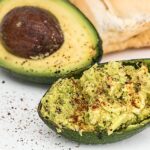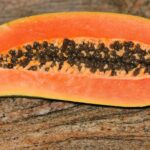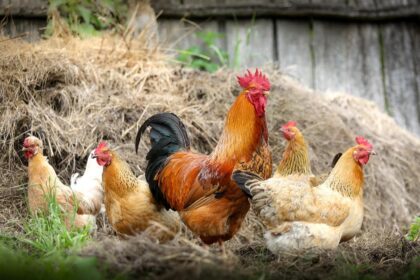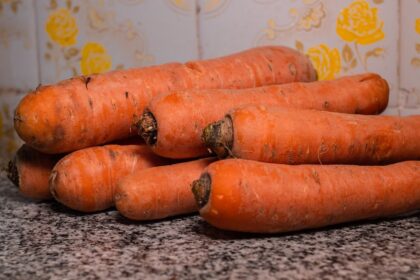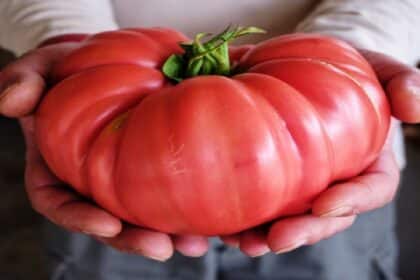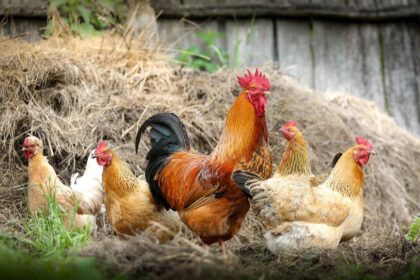Avocado Farming in Kenya is one of the most demanded products for local and export markets.
The avocado market’s success in Kenya has become known as green gold due to its high price, reaching record figures.
This increase has also been associated with drawbacks since the avocado crop requires ample water for optimal development.
In areas where the level of rainfall does not meet the plant’s water requirements, it should be subjected to extensive irrigation systems, thus putting the natural water sources at risk, mainly in those places with minimal resources.
Avocado Farming in Kenya – General characteristics
Although the taxonomic classification of avocado has been discussed for an extended period since different species came to be differentiated.
It is a kind of arboreal bearing that can reach 20 meters in height, although it generally remains between 8 and 12 meters.
In commercial plantations, the tendency is not to let them grow above 5 meters, thus facilitating the different tasks to be carried out, such as harvesting, pruning, and pest and disease control.
Avocado pollination
Avocado flowers are hermaphroditic. They present dichogamy: the female and male organs are on the same flower.
To avoid self-fertilization, mix two avocado trees in the same field. These two types(type A and type B) will then flower at different times of the year. Hence encouraging cross-pollination, which leads to high yields compared to self-pollination.
Bees are the primary pollinators of avocado flowers, needing beehives in your orchard.
Avocado Varieties in Kenya
There are over 40 varieties of avocado trees countrywide—however, the Fuerte and Hass variety’s main preferred avocado fruits for processing and export.
Other types used commercially include;
- Nabal
- Keitt
- Reed
- Hayes
- Puebla
- Simmonds
- Tonnage
- Pinkerton
- Booth 8
- Ettinger
- G6 & G7
- Duke
Avocado Growing Conditions in Kenya
Rainfall requirements
The avocado is a highly heliophilous crop, which means it needs total sunlight exposure to ensure high fruit-bearing production levels.
Although this factor is vital, temperatures should not be, in any case, above 36ºC since, from that point, the damage can be considerable, especially in fertilization and fruit set.
A rainfall of 1000 to 2500 millimeters is also required, adequately distributed throughout the year. Thus you need an irrigation system if there is not enough rainfall in your region.
Prolonged drought causes leaf drop, lowering the photosynthetic rate and reducing yield. Despite this, prolonged waterlogging can also have serious consequences.
The avocado tree is a species susceptible to the wind, which causes significant damage, leading to falling branches, flowers, and fruits and friction injuries between fruits and stems. Therefore, you must protect the farm, or if not, the provision of windbreaks is essential.
Soil Requirements
The most optimal soils for avocado farming in Kenya are deep with good drainage and adequate moisture retention capacity—avoiding soils that support water accumulation in the root zone.
This means that the avocado tree can adapt to a wide range of soils of PH 5.5-6.5. Those with a medium texture, such as sandy loam, are preferable.
The soil’s drainage capacity is related to its structure and organic matter content, ensuring porosity or adequate proportions of oxygen and water.
Irrigation requirements
Since it is necessary to avoid continuous soil puddling, drip irrigation is the most recommended irrigation system, allowing water savings more efficiently.
Drip irrigation also decreases the appearance of adventitious species, such as weeds, by localized flooding.
Avocado Farming in Kenya: Avocado Seedlings Planting
Once the type of irrigation has been decided, the planting framework must be designed. This is a determining point since it will significantly influence the correct development of the trees.
Avocado spacing requirement
In Kenya, the traditional plantation framework is 8 x 10 meters, nine x9 meters, and 10 x 10 meters.
This amplitude is because a central axis from which the ramifications start is not maintained.
Instead of employing pruning, they support different lateral axes, which grow horizontally, making it necessary for a great distance between the other trees.
However, in more intensive crops, distances can be reduced to 6 x 4 meters and can be reduced to 5 x 2 meters without compromising production levels.
How to plant the avocado tree seedlings
it would be best if you did a soil analysis to determine the type and rate of fertilizer to be applied before any recommendation is given.
Nitrogen is an essential nutrient in avocado farming in Kenya. However, the quantity of manure and fertilizer application to be used depends on soil fertility and the age of the seedlings.
To plant the tree seedlings, remove the plant from the plastic wrappings or container and place it firmly at the center of the hole.
Cover the crop lightly, leaving a basin-like hole with a mixture of farmyard manure, 120g of Double Superphosphate (46% P2O5), and topsoil. This way, there will be more water available to the plant if there is low rainfall.
Remember to plant the seedling at the same depth as in the nursery and
water it immediately after planting. In hot areas, provide shade to the seedlings after transplanting.
Mulching and Weeding
Do not use herbicides or any other weed control on an avocado orchard. For efficient moisture retention, the recommended mulch used on the farm is dry leaves or grass.
You can also intercrop in the orchard using peas, beans, cabbage, and males during the first 3-5 plants.
Avocado Farming in Kenya – Pruning
Pruning is carried out with two main objectives: maintaining harmonious and well-balanced development of the crown.
This ensures a uniform incidence of sunlight in all parts; and guarantees a balance between the production levels, the correct development of the rest of the tree, and the quality of the fruits.
A classification can be made between pruning, formation pruning, production pruning, and rejuvenation pruning in this crop.
The pruning of formation is the one that is carried out in the first phases of growth, determining the form that you want the tree to maintain; that is, it helps to define its final structure.
The one of production looks to obtain an improvement. On the production levels, its name indicates that eliminating old branches, damaged or unproductive enough, favoring younger ones replace them.
Finally, the rejuvenation pruning in which most of the tree is trimmed, either due to most of the structures’ involvement or some pathology of aging.
It is not advisable to drastically carry it out, as this could cause stress to the avocado tree.
Fruit Bearing
Different avocado varieties have different harvesting seasons. For example, the Hass avocado season in Kenya starts in June and runs through to the mid-month of September.
Whereas the Fuerte seasons start a little earlier in March or April and take roughly three months to mature and bear fruits, the first harvest peaks occur from July to August.
Avocado Farming in Kenya: Harvest and Marketing
In Kenya, avocado fruit is usually harvested between April and September.
Most of the avocado fruit varieties in Kenya do not change the color of their skin on maturity.
So you need to test with some samples by picking up a few fruits and then storing them at room temperature to determine their ripeness.
After 7- 10 days, check if they have softened without shrinking to know if they are now ready for harvesting.
Avocado Harvesting, treatment, packaging, and storage
- Avocados are harvested from the trees by cutting while leaving a 3cm stalk.
- Treat the avocado fruits by immersing them in the heated water at 50°C for 3-5 minutes. You can use commercial treatment fungicides such as Sporta K. Brochlura z and Bavistin (Carbendazim).
- Next, sort and grade the avocado fruits according to weight, size, and skin texture.
- Finally, dry and store the fruits at an optimum temperature of five degrees celsius (5°C). However, for the Hass and Fuerte varieties, storage is done after five hours of harvesting.
Avocado Farming in Kenya: Marketing
To succeed in marketing, you must develop high labeling and packaging methods that suit your need.
If you would love to download the full ebook on Avocado Farming in Kenya, kindly comment with your number, and we will give it to you at a price of Ksh 200






